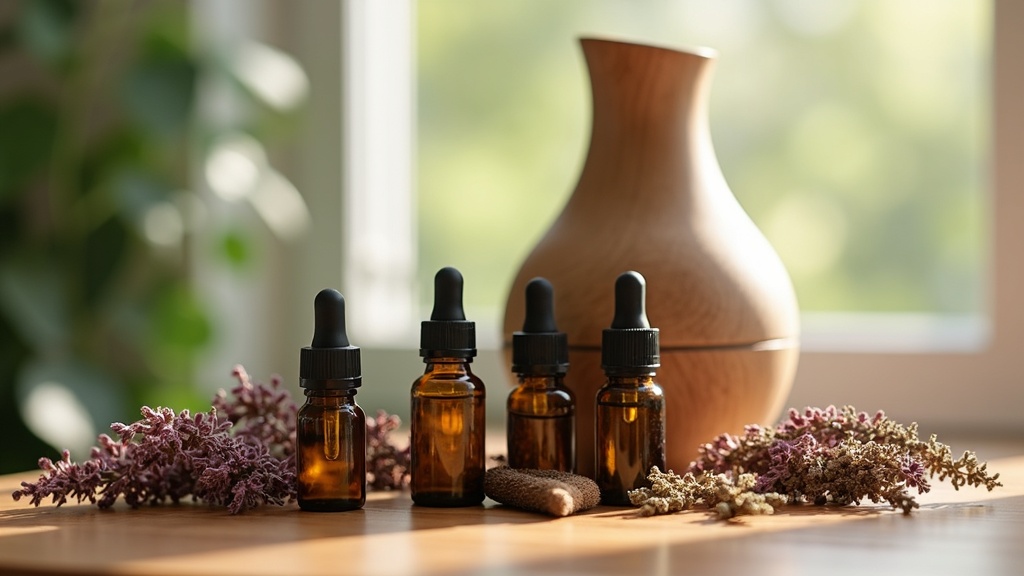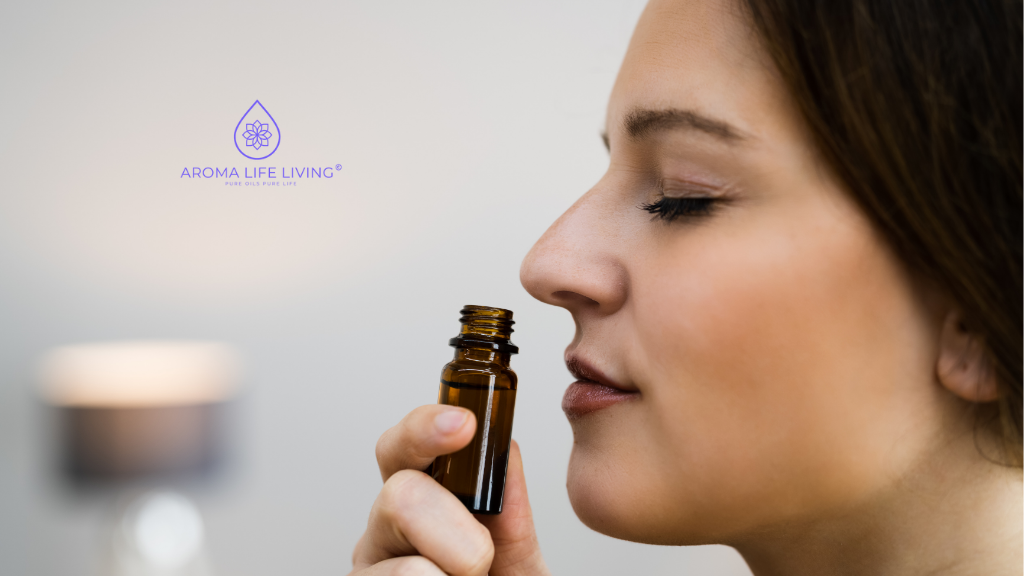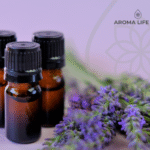Aromatherapy is an approach that uses natural plant extracts, usually in the form of essential oils, to support well-being for both mind and body. I’ve found it to be a helpful tool for managing stress and giving a boost to my sense of relaxation at home. By using scent, I can switch up my mood, bring a little energy into my afternoon, or wind down before bed. This guide covers the basics of aromatherapy, its benefits, and how to make it work for your daily routine.

What Is Aromatherapy?
Aromatherapy is the use of essential oils extracted from flowers, herbs, and trees to support emotional and physical health. I often use essential oils by inhaling their scent, but they can also be applied to the skin when properly diluted or even used in baths. The main goal is to tap into the specific properties of each oil to help with relaxation, mood, or certain physical concerns.
The essential oils work when their tiny aromatic molecules are breathed in or absorbed. These molecules travel to areas of the brain that play a role in mood, memory, and hormones. Because of this, I notice that different scents can quickly affect how I’m feeling.
The Basics of Aromatherapy: How It Works
The core of aromatherapy lies in essential oils, which are concentrated extracts from plants. I like to think of them as the spirit or life force of the plant; their fragrance is so strong and unique to each botanical. Some common examples include lavender, peppermint, tea tree, lemon, and eucalyptus, each bringing its own potential benefits.
People usually experience aromatherapy in three main ways:
- Inhalation: Breathing in the scent directly from the bottle, a diffuser, or a bowl of hot water. I often rely on diffusers to spread the aroma throughout a room, which helps create a calming environment.
- Topical Application: Applying diluted essential oils on the skin, like in massage oils or lotions. I always make sure my oils are mixed with a carrier oil such as almond or coconut oil to avoid irritation.
- Baths: Adding a few drops of oil into bath water, usually mixed with a dispersing agent such as milk or Epsom salts. This gives both aromatic and topical effects at once.
Different essential oils have different uses. For example, I use lavender before bed to unwind, while citrus oils like orange or lemon seem to give me a morning boost. Peppermint oil, when diluted and applied to my temples, helps with occasional headaches or tension.
What Are the Three Types of Aromatherapy?
I break aromatherapy down into three broad types, which helps me decide how to use it for specific needs:
- Aesthetic Aromatherapy: This focuses mainly on enjoying the pleasant scents and creating a relaxing atmosphere. Lighting a candle or using an oil diffuser falls into this category. I use this method to lift the mood in my home or office.
- Clinical Aromatherapy: This approach is more targeted and is often used by trained professionals in healthcare settings, such as hospitals or clinics. Oils are chosen based on research and the individual’s health needs. For example, a nurse might offer lavender oil to a patient to help reduce anxiety before a procedure.
- Home Aromatherapy: This everyday practice blends benefits from both aesthetic and clinical approaches. I use essential oils in my daily routine, combining relaxation and practical uses, such as easing a stuffy nose with eucalyptus oil in steam inhalation during a cold.
Common Benefits of Aromatherapy
I reach for aromatherapy because its benefits cover both mind and body. My own experience and research show that it can offer practical help, such as:
- Stress relief: Oils such as lavender, chamomile, and frankincense can create a calming effect that helps ease worry or tension after a long day.
- Better sleep: I have found that using a lavender diffuser or adding a drop to my pillow makes it easier for me to fall asleep and feel more rested in the morning.
- Improved mood: Citrus scents like orange, lemon, and grapefruit often give me a boost when I feel low or sluggish.
- Reduced aches and discomfort: Peppermint and eucalyptus oils, when diluted and applied to the skin, can ease muscle soreness or sinus pressure.
- Easier breathing: Eucalyptus and tea tree oils are popular choices when I have congestion or seasonal allergies, especially when used in a steam inhalation.
- Increased focus: Rosemary and peppermint are my go-tos when I want to feel more alert and productive.
Peer-reviewed studies, including those from the National Institutes of Health, support many of these uses. While aromatherapy is not a cure-all, I see it as a practical addition to my self-care toolbox rather than a replacement for medical advice or treatment.
Some additional advantages include easing digestive troubles and improving overall comfort in times of stress or emotional strain. For instance, scents such as ginger or peppermint may help with mild nausea, while floral oils like ylang ylang help create relaxation during periods of emotional tension.
Getting Started: Tips for a Beginner
If you’re brand new to aromatherapy, I’ve found starting simple makes things easier. Here’s how I built my own basics:
- Pick a few essential oils: I suggest beginning with three versatile choices, such as lavender, peppermint, and lemon. These cover sleep, alertness, and general relaxation.
- Choose a method: I prefer diffusers for an even scent in a room. For on-the-go, I sometimes add a drop of oil to a handkerchief and breathe in as needed.
- Always dilute for skin use: Essential oils are highly concentrated and can irritate skin or cause allergic reactions. I blend a drop or two of essential oil into at least a teaspoon of carrier oil before applying it to my skin.
- Try single oils first: I use pure, single oil blends in the beginning before trying more complex mixes. This helps me learn what each scent does for my mood and body.
With a little trial and error, I’ve learned what works best for my needs. I always patch-test on a small area of skin to watch for any reactions, and I avoid using essential oils near my eyes, mouth, or sensitive areas. As my confidence has grown, I’ve experimented with making my own blends, such as combining lavender and chamomile for bedtime or peppermint and lemon for energy.
What to Watch For: Safety and Quality
Picking high quality essential oils makes a real difference. I always read labels, checking that the oil lists the botanical name, country of origin, and extraction method. I steer clear of oils labeled only as “fragrance oils” since these often contain synthetic chemicals rather than pure plant extracts.
When using aromatherapy, I keep the following in mind:
- Some oils, such as cinnamon, clove, and oregano, are strong and can irritate skin even when diluted.
- Pregnant women, children, and people with certain health conditions should check in with a healthcare professional before using many essential oils.
- Not all pets can tolerate essential oils, especially cats. I avoid diffusing oils around animals unless I know it’s safe.
- I never ingest essential oils or place them inside my ears or nose.
Safe storage is also really important. I keep my oils out of reach of children and away from direct sunlight or heat to preserve their quality. In addition, I choose dark glass bottles for storage to prevent oil breakdown, and make sure to keep lids tightly closed when not in use.
Popular Aromatherapy Oils and Their Uses
Some essential oils get used again and again, both in studies and in my personal practice. Here are a few I rely on, along with their usual benefits:
- Lavender: Calms nerves, helps sleep, and refreshes a space.
- Peppermint: Helps with headaches, boosts alertness, and supports easy breathing.
- Eucalyptus: Clears nasal passages and helps with focus when I’m feeling foggy.
- Lemon: Energizes and freshens the air; a drop in a diffuser can clear up odors during cleaning sessions.
- Tea Tree: Cleans the air and supports the skin when used in diluted topical blends.
I adjust my oils seasonally and as my needs change, creating blends at home or buying premixed products from trusted brands. Over time, I’ve built a small collection that handles everyday stress, occasional headaches, and restless nights. Other favorites include frankincense for calm and grounding and rosemary for sharpening concentration during busy workdays. Experimenting with different oils can help you stumble upon new favorites that suit your routine.
Frequently Asked Questions
Question: What are the benefits of aromatherapy?
Answer: Aromatherapy supports stress relief, relaxation, better sleep, improved focus, and easier breathing, depending on the oils used. I’ve noticed these benefits even with simple routines using just a few oils.
Question: What do I need to get started with aromatherapy at home?
Answer: I find a basic diffuser and a small set of essential oils like lavender, lemon, and peppermint are enough to begin. Always read directions and use caution with kids, pets, and medical conditions.
Question: Are there any risks or side effects to aromatherapy?
Answer: Essential oils are generally considered safe when used as directed, but undiluted application can cause skin irritation. I always check safety guidelines, especially if I have allergies, sensitivities, or pets at home. It’s smart to patch-test new oils and avoid getting them in the eyes, mouth, or open wounds.
Aromatherapy offers a natural way to add more calm and balance to my day. With a few good oils and mindful use, it becomes an easy and enjoyable part of my self-care habits. If you’re curious to add something new to your routine, jumping into aromatherapy can be a simple and rewarding step toward better well-being. Remember, scents can make a space feel completely different, helping to set the mood for relaxation, work, or play. Starting small and staying informed ensures you make the most of your aromatherapy experience, building habits that stick and bring comfort every day.


